by Rosalee de la Forêt
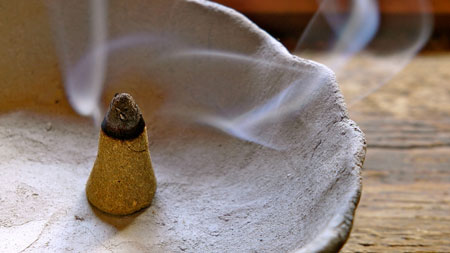
This next holiday HerbMentor newsletter is another herbal craft idea that comes from thousands of years of tradition.
The word incense literally means ‘to burn’. For thousands of years people have burned plants and resins as religious rites, as a purification process, for protection, to cleanse the air, to repel pests or simply to enjoy a pleasant scent perhaps masking bad odors.
Incense has a long tradition of use in the far east; some even say that the making and burning of incense blends is more of an art form than a utilitarian purpose.
Today we are going to learn to make cone incense. Cone incense was invented in Japan in the 1800’s. It is easy to make and burns relatively fast.
By making our own incense we know exactly what plants and resins are being used and we don’t have to worry about potentially toxic fillers in our incense. Even though we are using pure products, it is always best to burn incense in a well-ventilated area.
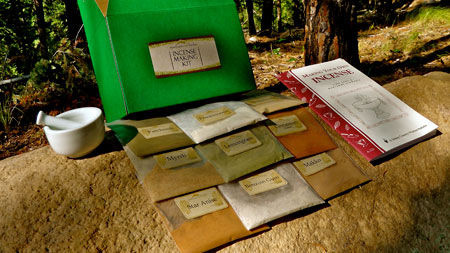
To make this incense I used a kit from Mountain Rose Herbs. The kit includes everything you need to make your own incense, including...
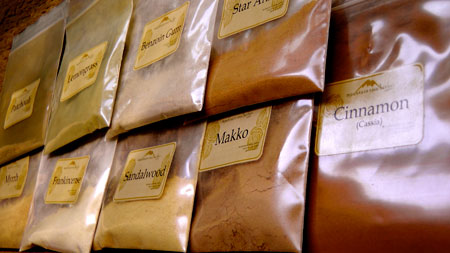
a variety of different powdered herbs...
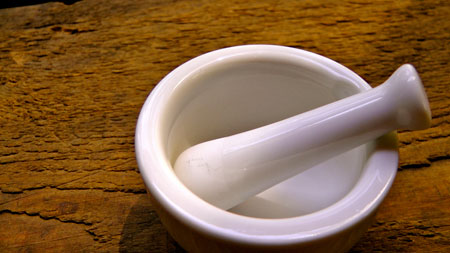
a small mortar and pestle...
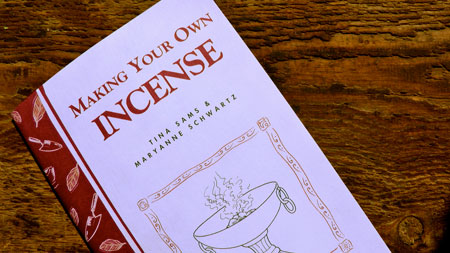
and a book on how to make your own incense, such as this one by our friend Tina Sams. This book contains a lot of different recipes for making your own incense. It also describes how to make powdered incense, cone incense and stick incense.
It isn’t necessary to buy the kit in order to make incense, however. You can also buy these powdered herbs at your local herb store or Mountain Rose Herbs.
There are many different incense recipes. I chose the following one as an example.
To make our incense we are going to combine the following...
- 3/4 teaspoon makko
- 1 teaspoon lemongrass
- 1/2 teaspoon frankincense
- 1/2 teaspoon sandalwood
- 1/4 teaspoon benzoin gum
- Click here to go directly to the Incense Kit and the above book
- Click here for Mountain Rose Herbs Main Product Index in case you already have some of the ingredients.
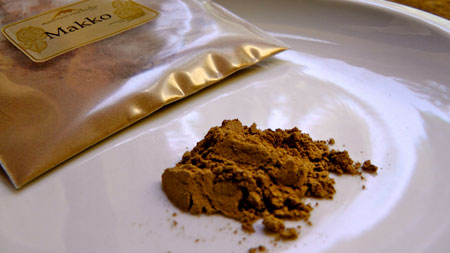
Makko is a prominent base ingredient for making incense.
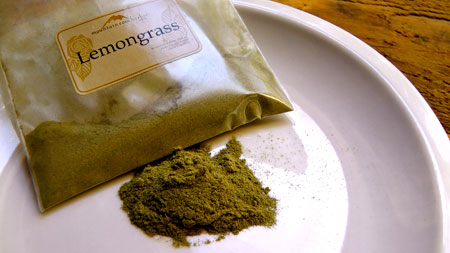
Lemongrass is one of my favorite tea herbs, it has a lovely pleasant scent when burned. It is also used to keep away bugs.

Frankincense is a famous incense that comes from the resin of a boswellia tree.
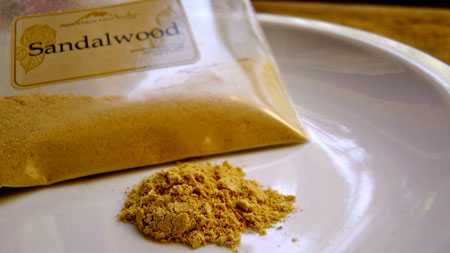
Sandalwood is a heavenly scent. Be sure to source this from an ecologically sound source.
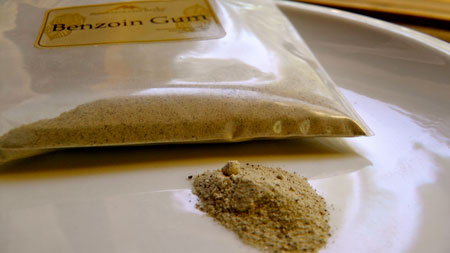
Benzoin gum is frequently used as a preservative in cosmetics and soaps. It has a mild, vanilla-like scent.

All of these powders can be combined in a small mixing bowl.
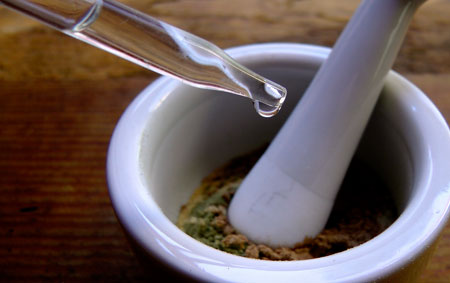
Next we’ll add small amounts of water to the mix until the powders can be formed into a malleable paste. I do this using a pipette dropper so that I can add water very slowly to avoid adding too much.
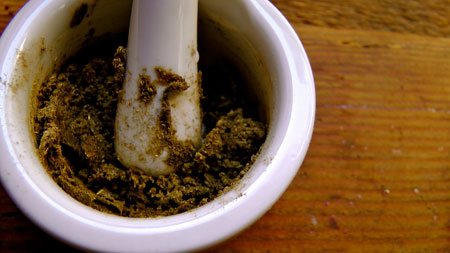
Add a little bit of water, stir, then add a little bit more until the mixture forms the consistency of play dough.
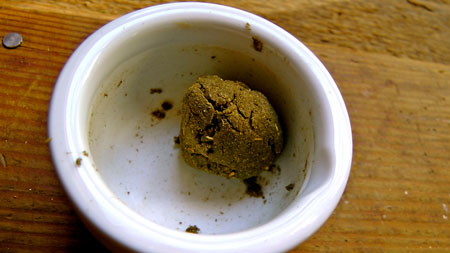
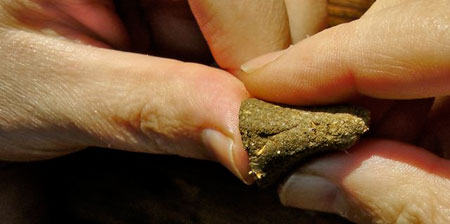
Once it is a paste, we can shape it into cones. To do this use your thumb as a base while you use your other hand to form the cone. Don’t make these too big or you’ll have difficulties getting them lit.
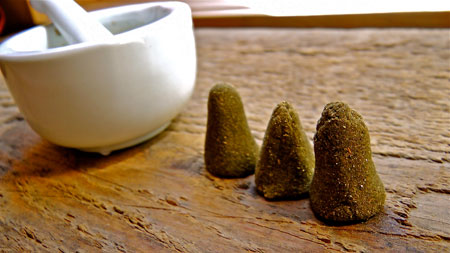
Place each of these cones on a piece of wax paper or other hard surface and let them dry for 24 hours.
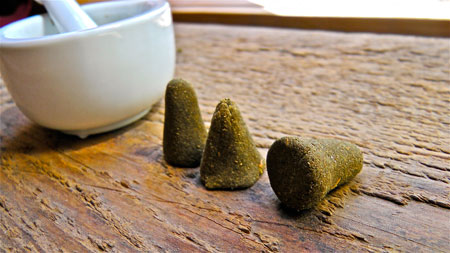
After 24 hours, lay these cones on their side to allow air circulation to the bottom of the cone.
Depending on your climate these may take 25 - 36 hours to completely dry.
Once they are completely dried they can be stored in an air-tight container until ready to use.
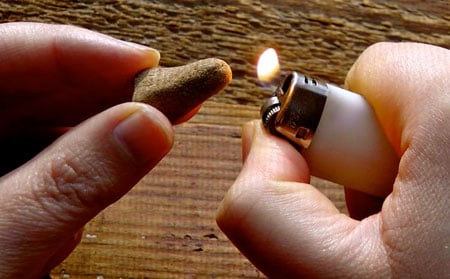
To use these incense take one cone and place it on a fire-safe surface. Using a match or lighter, light the very tip of the cone, let it burn for a moment, and then blow it out.
The cone will continue to smolder, giving off a pleasant scent, until all the incense is burned. Remember to burn these in a well-ventilated area.
Incense is a great way to bring a variety of pleasant scents to your home.
These also make great gifts.
Again, you can get all you need right here to get started.
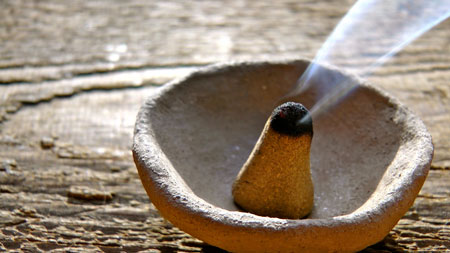
Have fun!
~Rosalee
